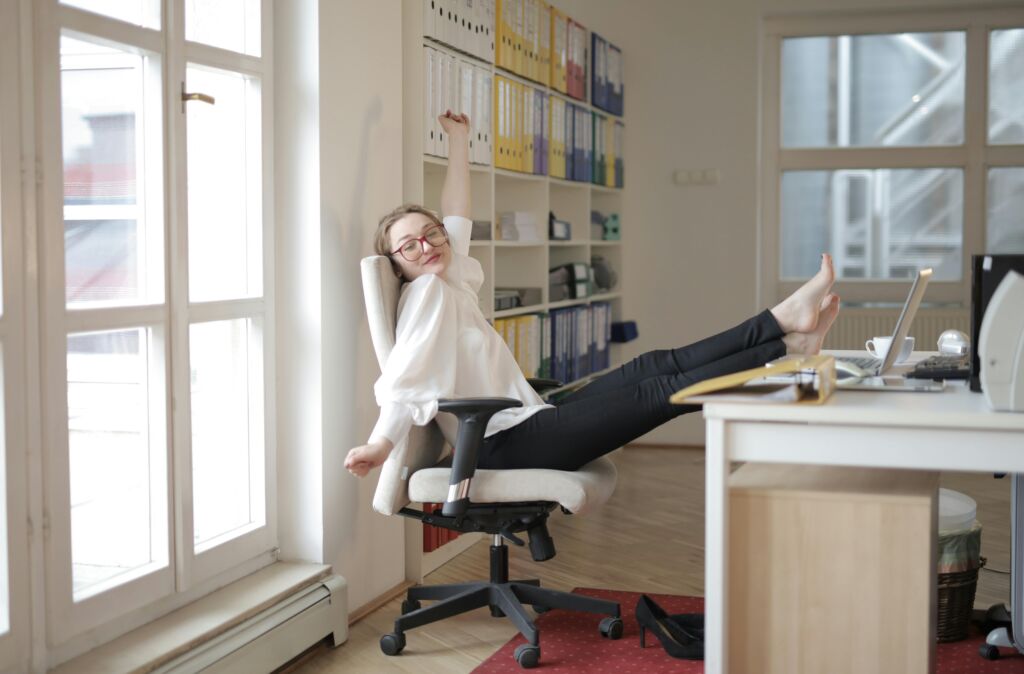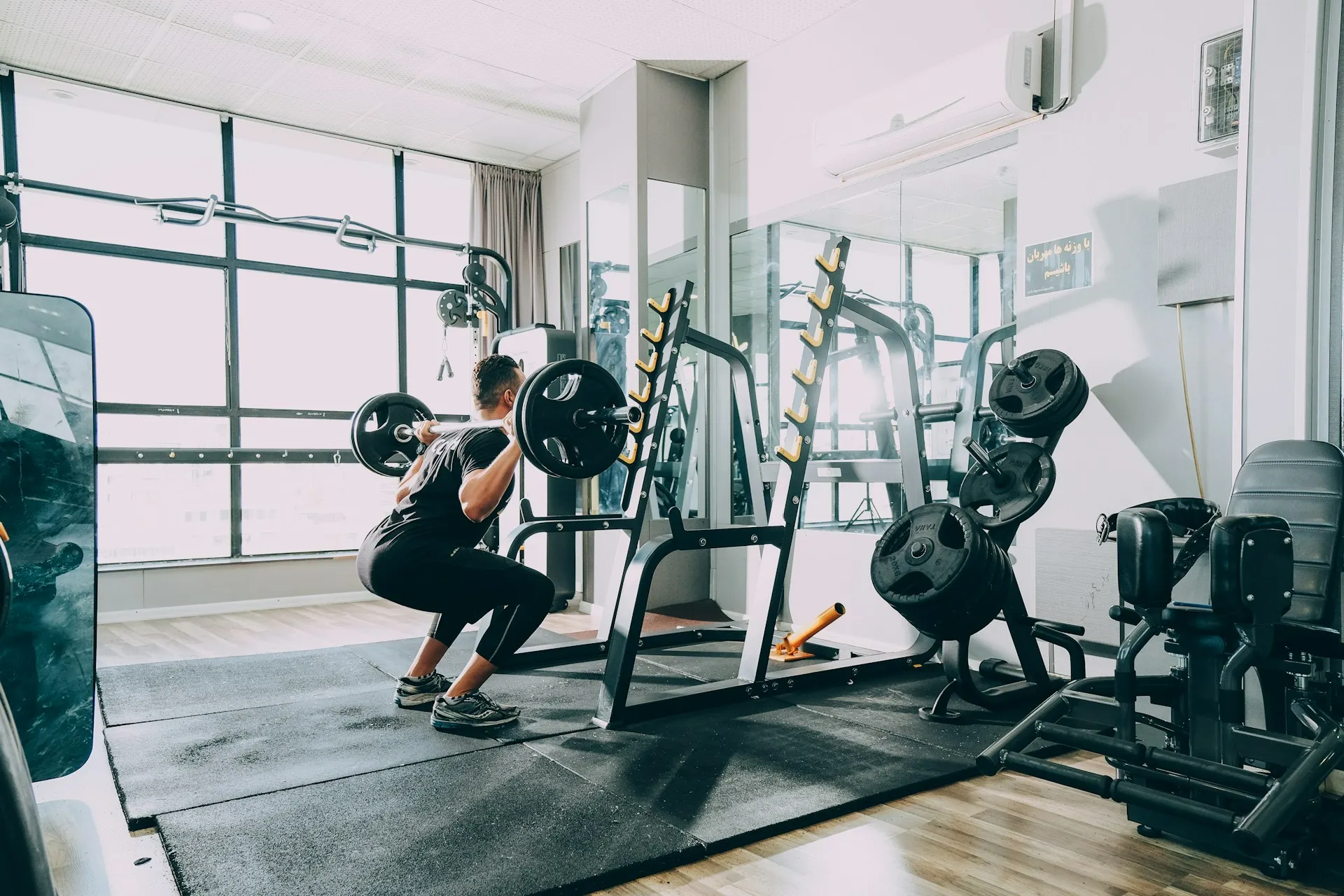Effective Desk Stretches –

If you are someone who spends most of their day sitting at a desk, you are familiar with the aches and pains that come with it. One common area of discomfort is the back of the knee, often caused by tight calf muscles and strained hamstring muscles. This can lead to limited mobility and even more discomfort down the line. Fortunately, incorporating a few simple desk stretches into your daily routine can help alleviate this pain and improve your overall well-being.
Understanding the Pain: Why the Back of Your Knee Hurts
Before diving into the desk stretches, it is important to understand why the back of your knee might be hurting. The pain is typically linked to tight calf muscles and hamstring muscles, which can become tense and inflexible from prolonged sitting. When these muscles are tight, they can pull on the structures around your knee, leading to discomfort and pain.
The Role of Tight Calf Muscles
Your calf muscles, located at the back of your lower leg, play a crucial role in movements like walking, running, and jumping. When you sit for extended periods, these muscles can become tight and restricted, reducing their flexibility. Tight calf muscles can contribute to pain behind the knee by pulling on the tendons and other structures that connect the calf to the knee.
The Impact of Tight Hamstring Muscles
The hamstring muscles, located at the back of your thigh, are also prone to tightness from prolonged sitting. These muscles are responsible for bending your knee and extending your hip. When they become tight, they can limit the range of motion in your knee, causing discomfort and pain in the back of your knee.
Incorporating Desk Stretches into Your Routine
Incorporating desk stretches into your daily routine is a simple and effective way to combat the discomfort caused by tight calf and hamstring muscles. Below are detailed instructions for several desk stretches that target these areas and can be performed right at your desk.
1. Seated Calf Stretch
Sitting for prolonged periods of time can cause your calf muscles to become tight and rigid, leading to pain and stiffness in the back of your knee. To counteract this, try the seated calf stretch:
- Step 1: Sit on the edge of your chair with both feet flat on the ground.
- Step 2: Extend one leg out in front of you, keeping your heel on the floor.
- Step 3: Gently pull your toes back towards your shin until you feel a stretch in your calf muscle.
- Step 4: Hold the stretch for 15-20 seconds, then switch legs and repeat.
This stretch helps lengthen the calf muscles, reducing tightness and relieving pain behind the knee.
2. Figure 4 Stretch
Our hamstrings can also become tight from prolonged sitting, which can lead to discomfort in the back of the knee. The figure 4 stretch is a great way to release tension in this area:
- Step 1: Sit in your chair with both feet flat on the ground.
- Step 2: Cross one ankle over the opposite knee, forming a figure 4 shape with your legs.
- Step 3: Gently push down on the crossed knee until you feel a stretch in your buttocks and the back of your thigh.
- Step 4: Hold the stretch for 15-20 seconds, then switch legs and repeat.
The figure 4 stretch targets the hamstring muscles, helping to alleviate tension and discomfort.
3. Standing Hamstring Stretch
For a deeper stretch that targets the hamstrings, try the standing hamstring stretch:
- Step 1: Stand up from your desk and place one foot on your chair, keeping your leg straight.
- Step 2: Slowly hinge forward at your hips, reaching towards your toes.
- Step 3: You should feel a stretch in the back of your thigh.
- Step 4: Hold the stretch for 15-20 seconds, then switch legs and repeat.
This stretch helps lengthen the hamstring muscles, improving flexibility and reducing pain behind the knee.
4. Desk Stretch
If you have a bit more space, the desk stretch is a great way to target both the calf muscles and hamstrings simultaneously:
- Step 1: Stand facing your desk with your feet hip-distance apart.
- Step 2: Place both hands on the edge of your desk.
- Step 3: Slowly walk your feet back until your body is in an L-shaped position.
- Step 4: Keep your legs straight and your heels on the ground. You should feel a stretch in your calves and the back of your thighs.
- Step 5: Hold the stretch for 15-20 seconds, then slowly walk your feet back in.
This stretch effectively targets both muscle groups, providing comprehensive relief for pain behind the knee.
Desk stretches can help relieve tension from sitting all day. Try simple moves like shoulder rolls, neck stretches, and seated twists for better posture and comfort.
Additional Tips for Managing Pain
In addition to incorporating these stretches into your daily routine, there are other strategies you can employ to manage and prevent pain behind the knee:
Regular Movement
One of the best ways to prevent muscle tightness is to ensure you are moving regularly throughout the day. Aim to stand up and walk around every 30 minutes. Even short walks can help keep your muscles flexible and reduce the risk of pain.
Ergonomic Adjustments
Make sure your workstation is set up ergonomically to reduce strain on your muscles. Adjust your chair, desk, and computer monitor so that you are sitting in a position that supports good posture.
Hydration and Nutrition
Staying hydrated and maintaining a balanced diet can also help keep your muscles healthy. Dehydration can contribute to muscle cramps and tightness, so make sure you are drinking plenty of water throughout the day.
Professional Help
If you are experiencing persistent pain, consider seeking help from a healthcare professional such as a physical therapist. They can provide personalized advice and treatment options to address your specific needs.
The Importance of Stretching
Stretching is an often-overlooked aspect of physical well-being, especially for those who spend long hours sitting at a desk. Regular stretching can improve flexibility, reduce muscle tightness, and alleviate pain. By taking a few minutes each day to stretch, you can make a significant difference in how your body feels and functions.
Benefits of Stretching
- Improves Flexibility: Regular stretching helps maintain and improve the flexibility of your muscles, which is essential for overall mobility and function.
- Reduces Muscle Tension: Stretching helps relieve tension in tight muscles, reducing the risk of pain and discomfort.
- Enhances Circulation: Stretching increases blood flow to your muscles, promoting healing, and reducing stiffness.
- Prevents Injuries: By keeping your muscles flexible and strong, stretching can help prevent injuries related to muscle strains and overuse.
Making Stretching a Habit
To make stretching a regular part of your routine, try setting reminders throughout your day. You can use a timer on your phone or computer to remind you to take stretching breaks. Additionally, consider incorporating desk stretches into other parts of your daily routine, such as when you wake up in the morning or before you go to bed at night.
Conclusion
Taking care of your physical well-being is just as important as your work tasks. By incorporating these simple desk stretches into your daily routine, you can relieve pain behind your knee caused by tight calf muscles and hamstring muscles. Remember to take regular breaks to move around and stretch and consider making ergonomic adjustments to your workstation to support good posture. Your body will thank you for the attention and care you provide, leading to improved comfort and overall well-being.
Incorporating these desk stretches and tips into your daily life can help prevent and alleviate pain, ensuring you stay comfortable and productive throughout your workday. So next time you are feeling discomfort in the back of your knees, take a few minutes to stretch it out. Your body will thank you.



